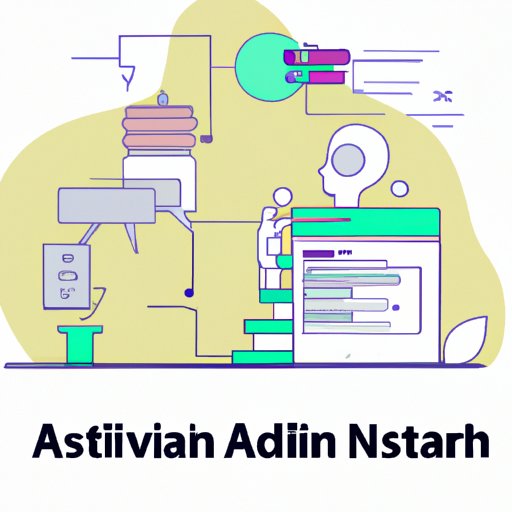Introduction
Artificial intelligence (AI) is a rapidly growing field that has the potential to revolutionize many industries. From self-driving cars to healthcare applications, AI systems are being developed to help automate tasks, increase efficiency, and provide better user experiences. But developing an AI system is no easy feat. It requires careful planning and execution, as well as an understanding of the various technologies and processes involved.
The goal of this article is to provide a step-by-step guide on how to develop an AI system. We will cover topics such as researching existing AI technologies, designing the architecture of the AI system, developing core algorithms, training the AI system with data, and testing and evaluating the system. By following these steps, you will be able to create a successful AI system.
Research Existing AI Technologies
The first step in developing an AI system is to research existing AI technologies. This will give you an idea of what types of AI technologies are available and which ones are most suitable for your project. You should consider factors such as cost, complexity, scalability, and performance when selecting the right technology.
It’s also important to consider the pros and cons of each technology. For example, some technologies may be more expensive but offer better performance, while others may be cheaper but require more effort to maintain. Additionally, you should consider whether the technology is open source or proprietary, as this can have an impact on the development process.

Design the Architecture of the AI System
Once you’ve selected the appropriate AI technology, it’s time to design the architecture of the AI system. This involves determining the high-level components of the system and how they interact with each other. You should also consider the low-level components, such as hardware, software, and databases.
When designing the architecture, it’s important to keep scalability and performance in mind. You should also ensure that the architecture is flexible enough to accommodate future changes and additions.
Develop the Core Algorithms for the AI System
The next step is to develop the core algorithms for the AI system. This involves selecting the appropriate algorithms and implementing them into the system. It’s important to note that different algorithms may be better suited for different tasks, so you should consider the specific requirements of your project when selecting the algorithms.
You should also consider the time and resources required to implement the algorithms. Depending on the complexity of the algorithms, it may take a significant amount of time and effort to get them up and running.

Train the AI System with Data
Once the core algorithms are in place, it’s time to train the AI system with data. This involves collecting and preparing the data, as well as training the system. The type of data used will depend on the type of AI system you are developing and the tasks it will be performing.
It’s important to note that the quality of the data is critical. Poor quality data can lead to poor results, so it’s important to ensure that the data is accurate and relevant. Additionally, the training process must be carefully monitored to ensure that the AI system is learning correctly.
As Dr. Andrew Ng, Chief Scientist at Baidu and co-founder of Coursera, put it: “Data is the fuel that drives the engine of artificial intelligence. Without data, no AI system can learn.”

Test and Evaluate the AI System
The final step in developing an AI system is to test and evaluate it. This involves setting up evaluation criteria and testing the system to ensure it meets the desired standards. Additionally, you should evaluate the system to determine its accuracy, reliability, scalability, and performance.
It’s also important to monitor the system over time to ensure that it continues to perform as expected. This will allow you to identify any issues or areas where improvements can be made.
Conclusion
Developing an AI system is a complex process that requires careful planning and execution. In this article, we provided a step-by-step guide on how to develop an AI system, covering topics such as researching existing AI technologies, designing the architecture of the AI system, developing core algorithms, training the AI system with data, and testing and evaluating the system.
By following these steps, you will be able to create a successful AI system. However, it’s important to note that the success of the system ultimately depends on the quality of the data used to train it. As such, it’s essential to ensure that the data is accurate and relevant.
(Note: Is this article not meeting your expectations? Do you have knowledge or insights to share? Unlock new opportunities and expand your reach by joining our authors team. Click Registration to join us and share your expertise with our readers.)
